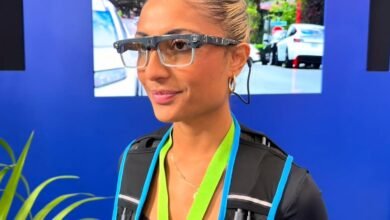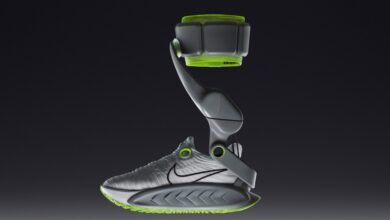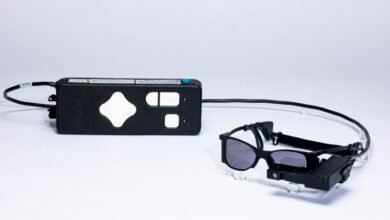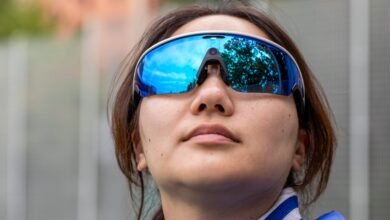The Smart Glasses Race Is Officially Heating Up

▼ Summary
– The Meta Ray-Ban Display smart glasses feature a hidden monocular screen that allows users to view messages, photos, and maps while remaining nearly invisible to others.
– Apple is reportedly shifting focus from a lighter Vision Pro headset to accelerate development of its own smart glasses, including versions with and without displays.
– Apple’s potential glasses could integrate seamlessly with its ecosystem, syncing iMessages, music, and maps to create a compelling extension of the iPhone.
– Despite Meta’s current lead in smart glasses, Apple’s rumored products may not launch until 2027-2028, giving Meta years to refine its hardware.
– Apple has historically succeeded by entering markets late with polished products, as seen with the iPod and iPhone, suggesting it could do the same with smart glasses.
A new wave of competition is emerging in the wearable technology sector, with major players accelerating development of smart glasses that blend everyday fashion with advanced digital capabilities. These devices promise to deliver notifications, media, and navigation directly into the user’s field of view, creating a seamless bridge between the physical and digital worlds.
During a recent demonstration, a colleague wearing what appeared to be ordinary glasses effortlessly managed multiple tasks through an integrated display. She scrolled through WhatsApp conversations, composed messages, used the display as a camera viewfinder, adjusted Spotify volume with simple hand gestures, and followed map directions, all while the display remained completely invisible to observers. The experience showcased the Meta Ray-Ban Display smart glasses, which feature a discreet monocular screen embedded in the right lens. Despite some bulkiness, the collaboration with Ray-Ban ensures the glasses maintain a fashionable appearance that wouldn’t look out of place in daily wear.
The demonstration naturally sparked thoughts about what Apple could bring to this category. Given Apple’s ecosystem integration capabilities, smart glasses connected to iPhones could revolutionize how users interact with their digital environment. Imagine having speakers, an eye-level camera, and a private display for notifications, music, and directions seamlessly integrated into eyewear.
Recent reports indicate Apple shares this vision, with the company reportedly shifting resources from developing a lighter Vision Pro headset to accelerating its smart glasses initiatives. The technology giant appears to be pursuing both display-equipped and display-free versions of smart glasses. Even the simpler non-display model represents significant potential, essentially functioning as sunglasses with AirPods functionality, which alone would likely attract substantial consumer interest.
While cameras integrated into facial wear raise some privacy concerns, the commercial success of Meta’s camera-equipped Ray-Ban glasses demonstrates clear market acceptance. Apple’s potential advantage lies in deep ecosystem integration that could synchronize iMessages, photos, maps, contacts, and music across devices. If Apple glasses function as a sophisticated iPhone accessory, they would immediately become a compelling product within the company’s hardware portfolio.
Apple’s track record with miniaturized components in products like AirPods and Apple Watch suggests any glasses they develop would feature best-in-class hardware. However, industry observers note these products might not arrive imminently, with display-free glasses potentially announced next year for 2027 availability and display-equipped versions following in 2028. This timeline gives Meta several years to refine its technology and expand its user base.
The strategic motivations differ between these tech titans. Meta aims to challenge smartphone dominance, with CEO Mark Zuckerberg having expressed frustration about operating within Apple’s platform constraints. Conversely, Apple seeks to protect its mobile ecosystem dominance while ensuring it doesn’t miss the next computing platform shift. With Apple currently playing catch-up in artificial intelligence and Meta establishing an early lead in smart glasses, the competition appears particularly urgent.
Apple has historically demonstrated the ability to enter markets later than competitors and still achieve dominance, as evidenced by its successes with MP3 players and smartphones. This pattern suggests timing might not be the decisive factor in the smart glasses race. Whatever Apple ultimately names its offering, with iGlasses being one appealing possibility, the company’s approach to blending hardware, software, and services could redefine this emerging category.
(Source: The Verge)





